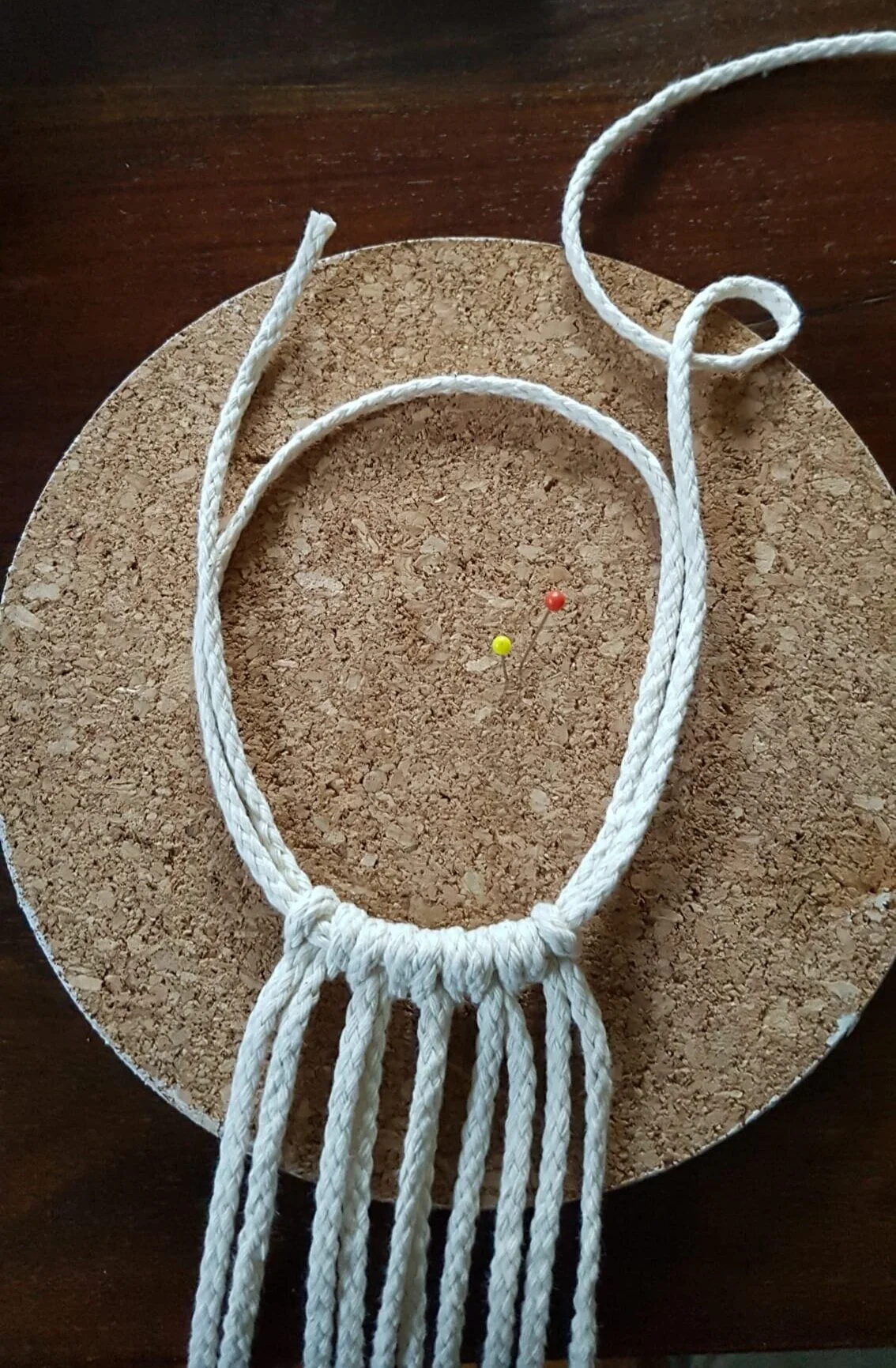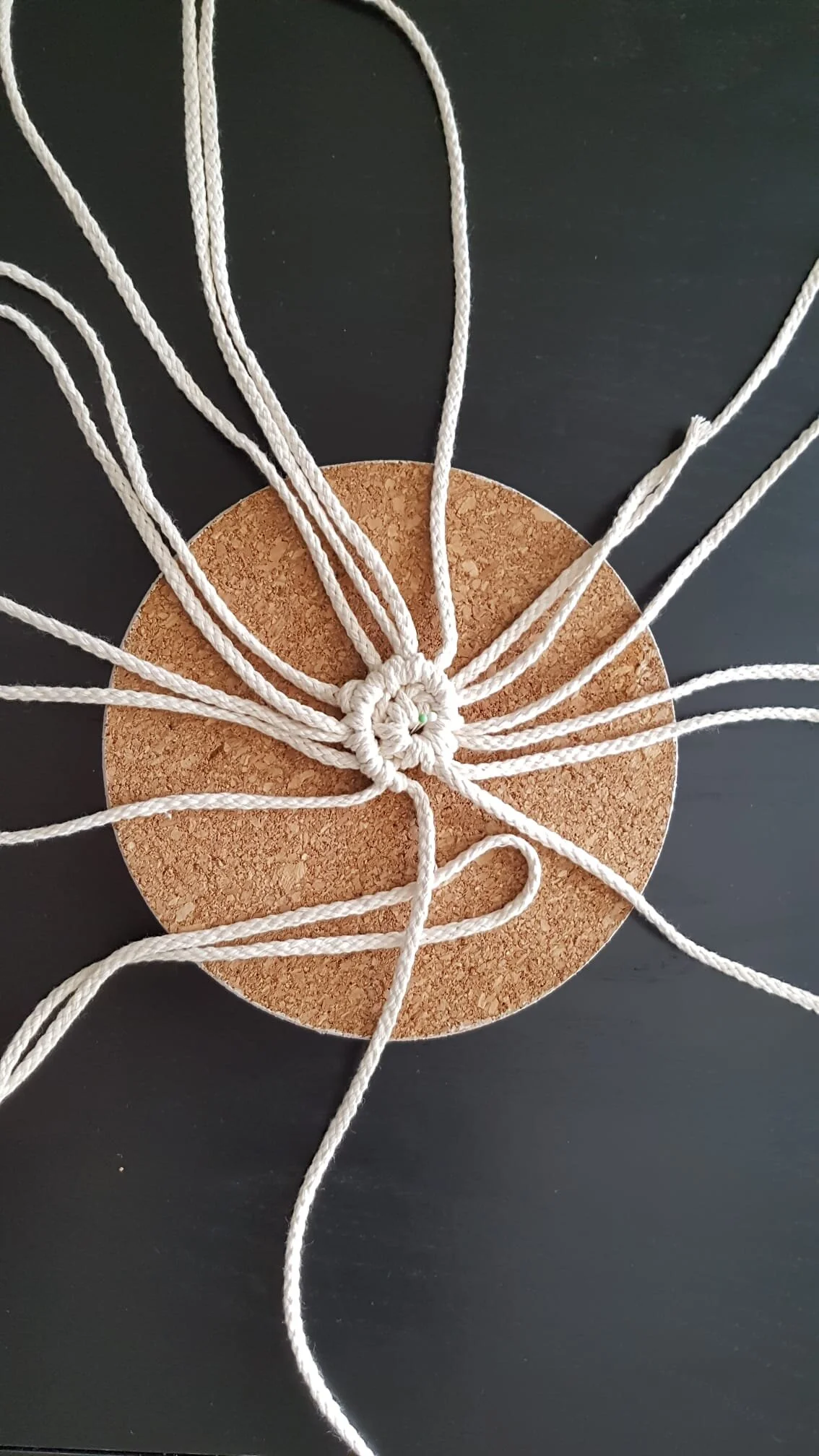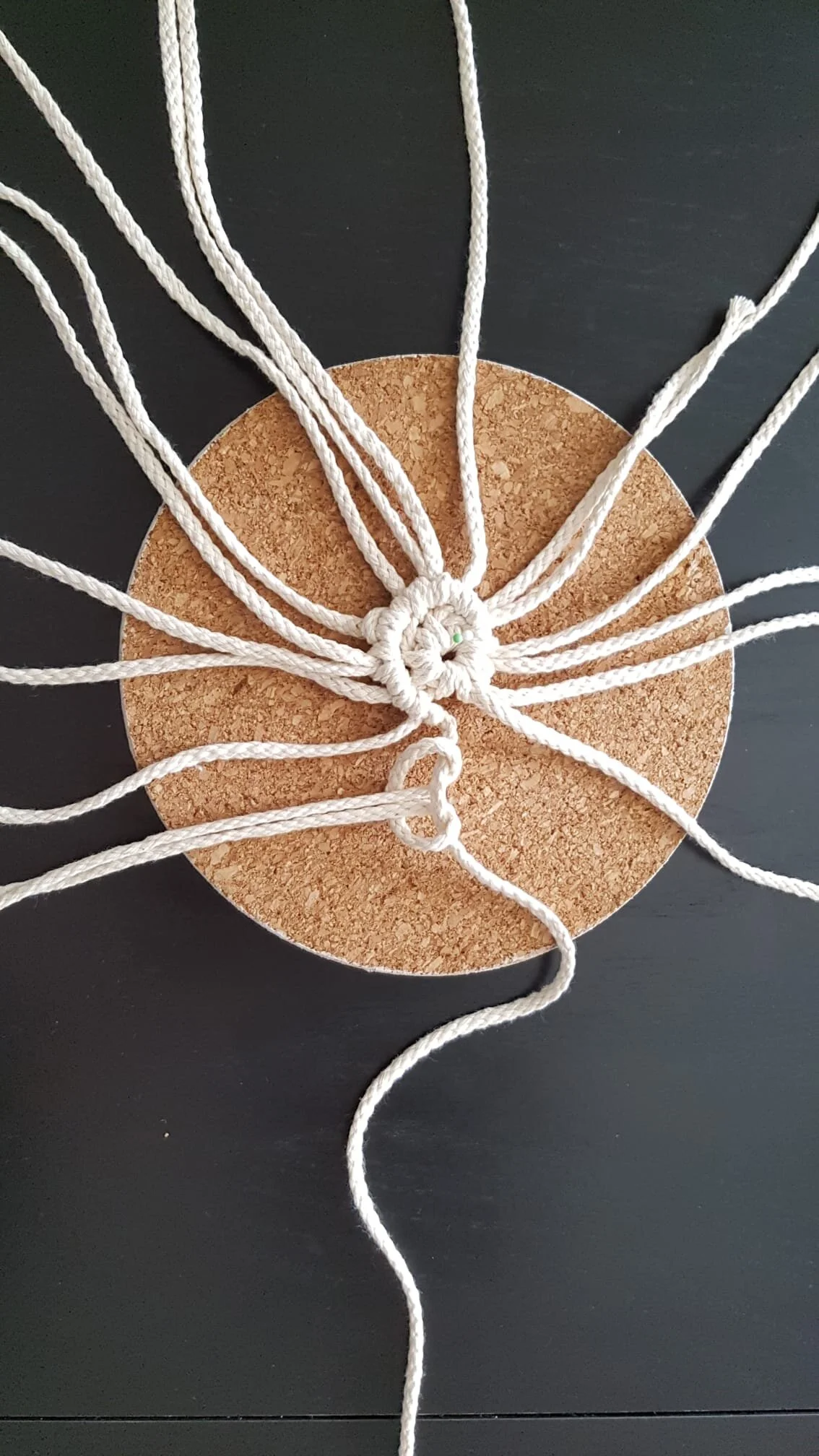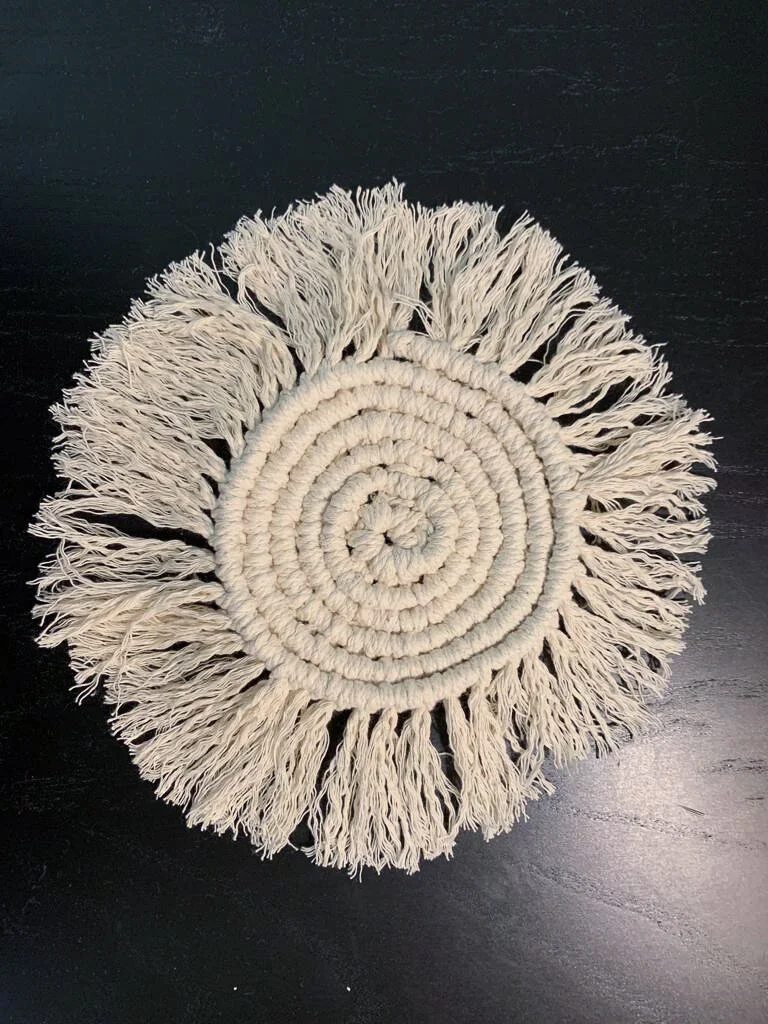Beginner-Friendly Macrame Coaster DIY
Alright, I finally fell for the trend as well and made a makrame coaster. On our Germany trip I saw this pretty yarn in one of the shops. Do you ever buy something because it looks super pretty in the store with all the surroundings and then at home you realize that the thing you bought mainly looked amazing because of how everything was displayed? Well, that’s kind of what happened with the Makrame yarn. But since I had it, I thought I might as well use it now. A lot of the makrame ideas look like they are rather difficult to make, especially when you’re not so much into knots… The coaster though turned out to be really easy and a nice little evening project.
What you need:
Makrame yarn
You will want to think about the thickness. Part of my problem was that I bought a really thick yarn which already crossed out a lot of really fun projects, like a key chain. For the coaster my 5mm thick yarn turned out to be practical.
Scissors
Measuring tape or ruler
Needles
Cork coaster or something to attach the coaster to while working on it
How to:
Preparations: Cut 1 long piece to 180cm and 5 shorter pieces to 85cm. You also need 15 pieces of 75cm length.
Lay the long piece into a loop. One end should be pretty short like in the photo below. Then take the 5 pieces of 85cm length and fold it in half. Lay the loop end under the long piece and make it into a knot like down below. Do that with all 5 pieces.
3. Now pull on the long end of the long piece so you get a circle like down below. The longest thread will be your holding stand. Don’t worry about the short end, you can ignore that one until the end.
Now take the yarn that is to the right of the holding strand and move it under the holding strand. Then go over it and underneath again. You can see the knot in the photo below. Pull it tight and hold on to the holding strand and then make the same knot again, so twice per strand. This is what you will do with all the threads until you come across a big gap.
4. Sometimes it feels like the gap to the next strand is pretty big. That’s where you insert one of the 15 short threads. It is the same knot like in the beginning. Fold the thread in half, lay it under the holding strand and pull the other end through. Make it tight and move on to the next strands. Keep moving on with step 3 and 4 until you’ve reached your chosen size or the threads become too short.
5. Take the holding stand and tie it into a knot like shown in the photo. The short end of the holding strand should now be on the underside of the coaster. Tie it the same way and cut it very short.
6. Find something round in your house that has about the same size of the coaster. Lay it on top and cut all the strands into the same length. Take a comb (probably a smaller one than mine but that was all we had) and comb out the ends. After you’re done you will have to cut the ends again to make them more even. And that is it! You’ve made your first Makrame coaster!
Tip: If your coaster ends up bending one way you can iron it or soak it in water. Then press it with a vase or a heavy plate.












